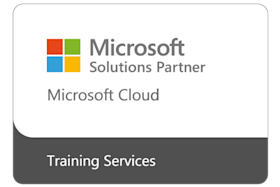Explain the core principles of the Zero Trust security model and how they apply to Microsoft 365
Identify the integrated security tools and features available in Microsoft 365 for protecting identities, endpoints, data, applications, infrastructure, and networks
Summarise the key tasks involved in building a layered security strategy, including assessment, identity protection, endpoint compliance, data classification, threat monitoring, and user education
Describe Microsoft 365’s threat protection and intelligence capabilities, including how they help detect, investigate, and respond to security threats
Understand the fundamentals of identity and access management, including authentication, single sign-on, and role-based access control in Microsoft 365
Recognise best practices for troubleshooting, monitoring, and maintaining a secure Microsoft 365 environment
Understand how Microsoft 365 brings together tools like Exchange, Teams, SharePoint, and OneDrive under one secure and cloud connected environment
Use the Microsoft 365 admin center to access service management areas, perform configuration tasks, and monitor service health
Describe the initial setup tasks in Exchange, SharePoint, and Teams
Understand how identity controls, access policies, and compliance configurations protect against unauthorised access and misuse
Describe how to delegate permissions and responsibilities securely using predefined or custom admin roles
Understand the core features and benefits of Microsoft Purview for data protection, governance, and compliance in Microsoft 365
Identify and classify sensitive information using automated and manual tools, including sensitivity labels and trainable classifiers
Explain how to implement and manage data loss prevention (DLP), insider risk management, and communication compliance policies
Describe best practices for data lifecycle management, including retention, archiving, and deletion of organisational data
Recognise and address risks related to oversharing and data access governance in SharePoint and other collaboration platforms
Understand how Microsoft 365 Copilot accesses and secures data, and how to monitor and control AI-driven data interactions for compliance and safety
Explain the architecture and key components of Microsoft 365 Copilot, including Microsoft Graph, orchestration services, and large language models
Describe the differences between Copilot and agents, and identify scenarios where each is most effective for productivity and automation
Understand the various types of agents available in Microsoft 365, including prebuilt, custom, SharePoint, and advanced agents, and their roles in supporting business workflow
Summarise the licensing models and deployment strategies for Microsoft 365 Copilot and agents, including feature enablement and administrative controls.
Recognise best practices for planning, configuring, and governing Copilot and agents to ensure security, compliance, and effective adoption
Identify real-world use cases for Copilot and agents and select the right tool for specific business needs within the Microsoft 365 ecosystem
Manage Microsoft 365 Copilot licences and pay-as-you-go billing
Monitor and adjust pay-as-you-go Copilot usage
Track Microsoft 365 Copilot user adoption
Use Copilot Analytics to monitor usage patterns and adoption trends
Manage and govern prompts in Microsoft 365 Copilot
Employ operational best practices, such as troubleshooting common issues and communicating changes to end users
Create a Microsoft 365 Copilot Chat agent
Create a SharePoint agent
Test, edit, and publish agents
Manage user access and permissions for agents
Manage the agent approval process and governance policies for agent deployment
Monitor and manage the agent lifecycle using Microsoft 365 and Power Platform tools
This course is designed for beginning-level technical IT/Pros and novice administrators seeking foundational understanding of Microsoft 365 services and Microsoft 365 Copilot. Learners are introduced to the essential components, concepts, and capabilities they need to utilise and manage Microsoft 365, Copilot, and agents.


